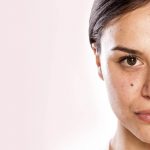Q-switched laser treatment:
The Q-switched laser is used to remove unwanted brown spots, sun freckles, or tattoos from your skin. The laser energy pulse, which is in billionths of a second, releases the pigment into the skin so it can be naturally reabsorbed and disposed of by the body.
How do you know if you need this treatment?
The Q-switched laser is appropriate if you have a few isolated colored spots, large or small, that you would like to remove. We stress that this treatment is best for removing only a few spots. If you have many diffused spots we recommend a photorejuvenation procedure such as with intense pulsed light (Elight) or the Fraxel laser. The Q-switched laser is also effective against sun spots on the chest, arms or legs. The Q-switched laser is not appropriate for pregnant women or patients who have taken Accutane for the past six months. Persons with a history of cold sores or herpes simplex virus should not have this procedure until they are treated for these conditions.
Q- Switch used for:
- Treatment of pregnancy spots or melasma
- Treatment of post-inflammatory darkening, including spots after pimples, or sores
- Treatment of superficial skin wrinkles
- Treatment of pores in the skin
- Tattoos Removal
- Improve vascular lesions (telangiectasia)
How does Q-switched laser treatment work?
The Q-switched laser is used to remove unwanted brown spots, sun freckles, or tattoos from your skin. The laser energy pulse, which is in billionths of a second, releases the pigment into the skin so it can be naturally reabsorbed and disposed of by the body.The laser energy feels like many tiny hot dots on your skin. The discomfort is greatly reduced (but not eliminated) by a stream of cold air directed at the spots during treatment. Tattoo removal without anesthetic is very painful, so we always attempt to anesthetize the area before performing tattoo removal.
What can you expect for this treatment?
A single treatment usually removes greater than 75-100% of an individual brown spot. A second or, on rare occasions, a third treatment, may be needed to completely neutralize the color.
What are the risks and side effects?
A red or brown spot may appear when the treated sun freckle is gone and the crust heals. Although this new spot is temporary and usually goes away on its own, it can be treated if it persists. Infections and/ scars are rare. Proper skin care and sun avoidance are important.Prior to treatment potential risks and side effects will be discussed with you by your cosmetic coordinator and medical provider.
What happens after treatment?
If the area being treated is the face, make sure to tell the provider if you have a history of cold sores on herpes simplex because laser energy may activate the virus. Be aware that you will have crusts on the treated area for a few days to 2 weeks (if on the legs, it may even be 3-4 weeks). We recommend that you treat these with plain vaseline or petroleum jelly and keep them covered with bandages until they are healed, as this speeds the healing. Although you can use makeup over the treated areas, they may be difficult to cover with makeup. Otherwise no preparation is necessary.
You feel a burning sensation on the treated area for several minutes or up to a few hours. The spots become red and form a crust that must be covered to heal optimally. The crust heals in 3 to 14 days, (longer for arms and legs) depending on the location and how well you care for it.
Can we combine this with other treatments?
Yes, but not on the same day in the same area as the Q-switched laser treatment. This is because the laser develops so much heat during treatment.
